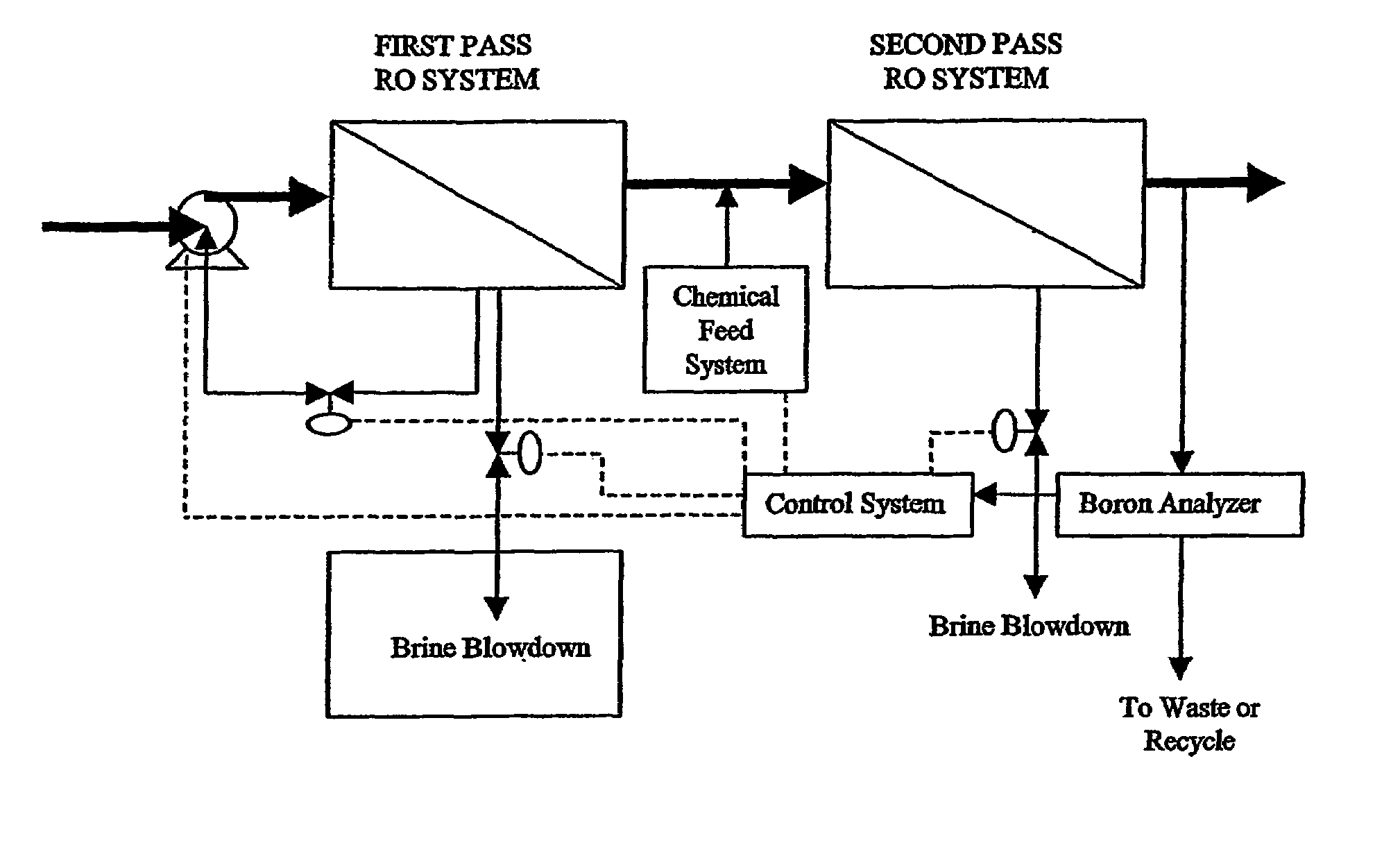Control of water treatment system with low level boron detection
a water treatment system and low-level technology, applied in non-contaminated water treatment, electrodialysis, biological material analysis, etc., can solve the problems of affecting the quality and performance of a semiconductor chip, boron may be present as a contaminant, slowing down, etc., to optimize the overall demineralization of the feed flow, optimize the overall demineralization, and high-efficiency boron removal state
- Summary
- Abstract
- Description
- Claims
- Application Information
AI Technical Summary
Benefits of technology
Problems solved by technology
Method used
Image
Examples
Embodiment Construction
[0032]The present invention provides UPW treatment methods and apparatus with control of filled cell EDI stacks (FIG. 1A) and / or RO units (FIGS. 1B, 2) based on or in response to a boron detection or measurement. The construction and operation of a low level boron detector suitable for real-time, rapid, inexpensive on-line measurement of boron in ultrapure water used for example to manufacture semiconductor electronic circuitry is described in International Patent Application PCT / US01 / 24637. This instrument is a convenient (and less costly) measurement instrument than the conventional ICP-MS instrument used for low-level boron measurement, and it may be attached on-line to monitor boron levels and confirm water quality of a boron at the low ppt level to confirm boron free operation of a water treatment system. Other instrumentation can be used to sample higher levels of boron, or sample boron in the presence of other ions, and may be used to detect boron concentration at earlier sta...
PUM
| Property | Measurement | Unit |
|---|---|---|
| Fraction | aaaaa | aaaaa |
| Fraction | aaaaa | aaaaa |
| Pressure | aaaaa | aaaaa |
Abstract
Description
Claims
Application Information
 Login to View More
Login to View More - R&D
- Intellectual Property
- Life Sciences
- Materials
- Tech Scout
- Unparalleled Data Quality
- Higher Quality Content
- 60% Fewer Hallucinations
Browse by: Latest US Patents, China's latest patents, Technical Efficacy Thesaurus, Application Domain, Technology Topic, Popular Technical Reports.
© 2025 PatSnap. All rights reserved.Legal|Privacy policy|Modern Slavery Act Transparency Statement|Sitemap|About US| Contact US: help@patsnap.com



